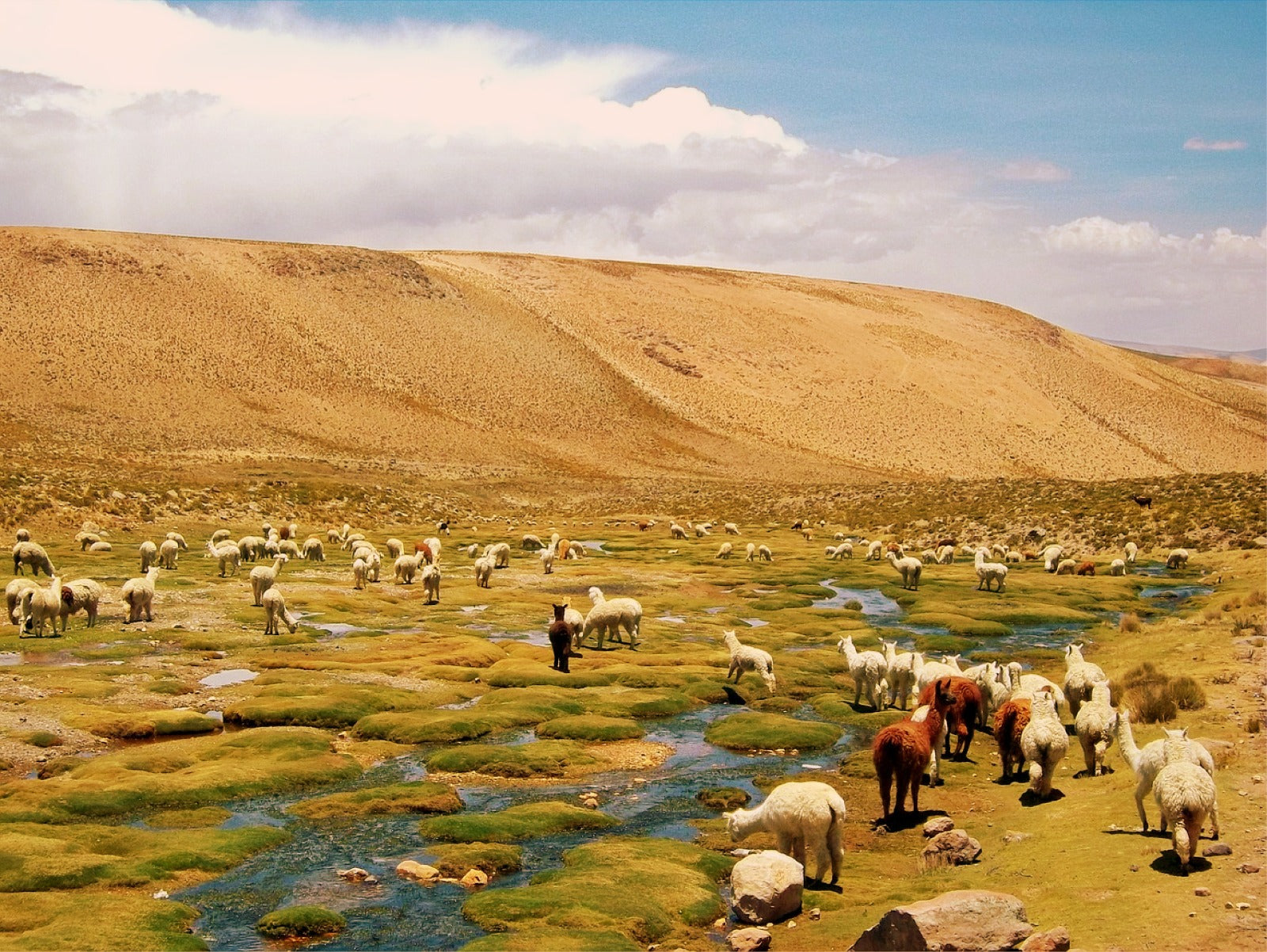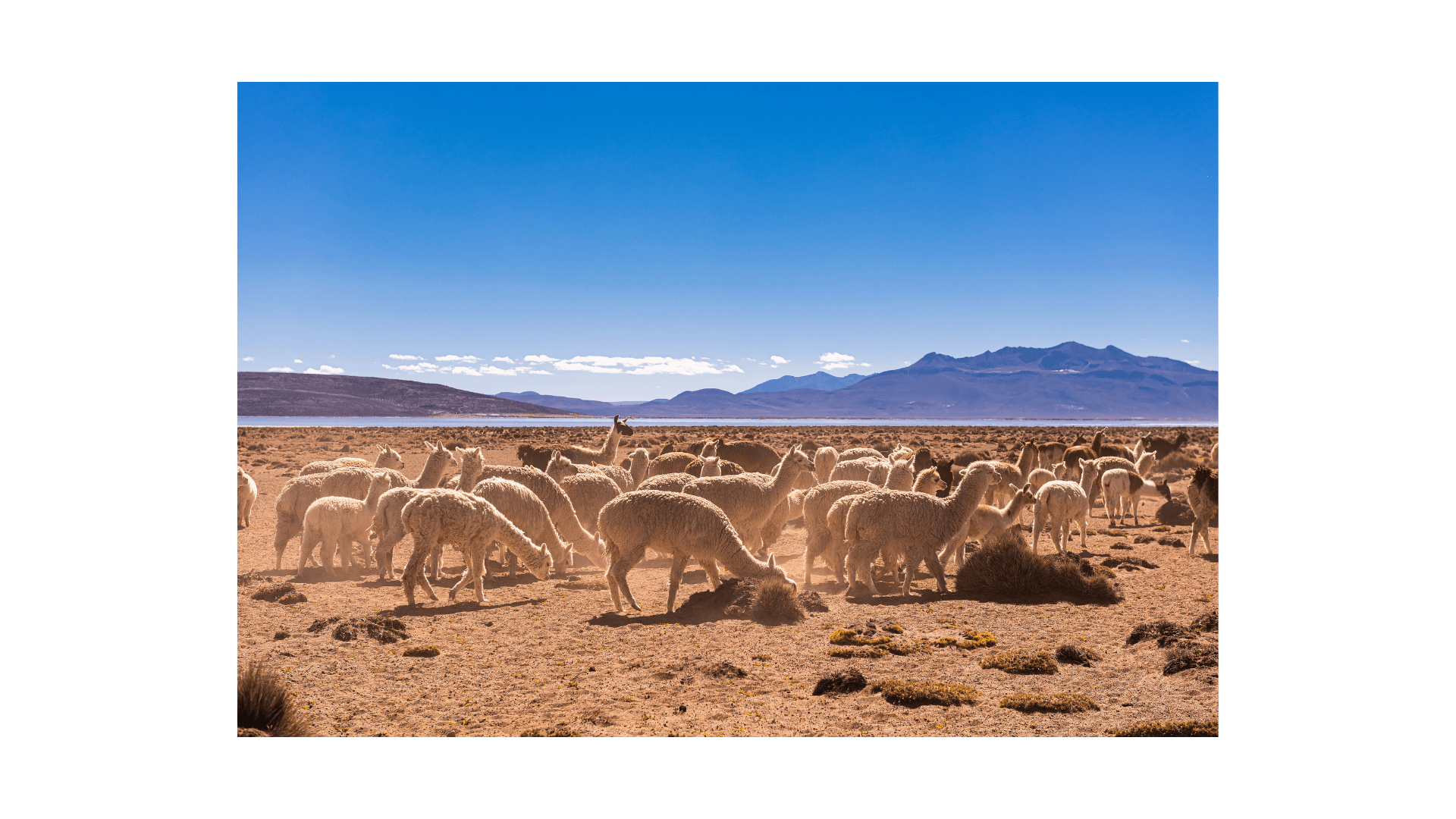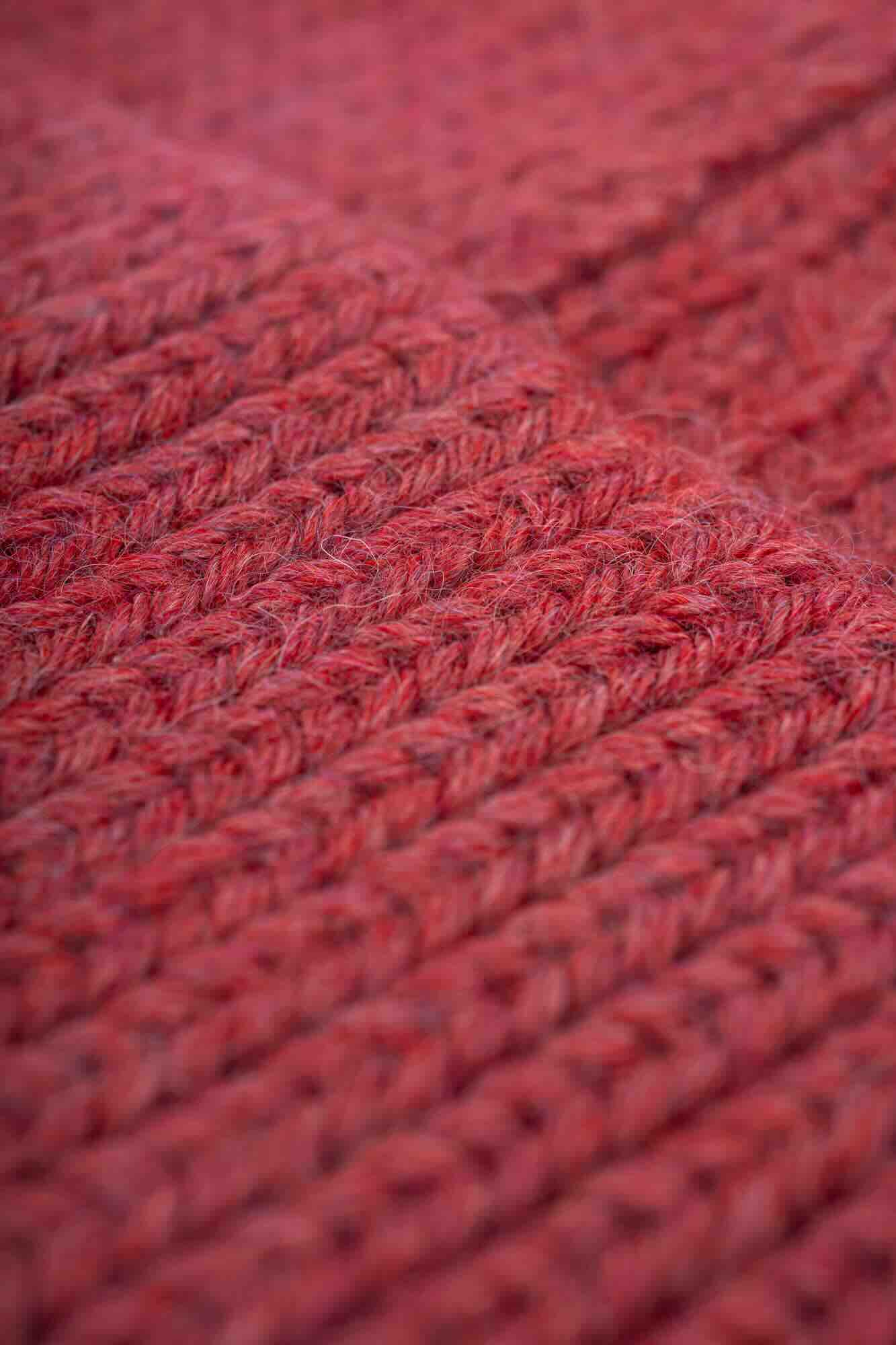Our Alpaca

Our alpaca wool comes from the highlands of Peru and is prized for its luxurious softness, warmth and durability. Each piece is carefully selected to become a timeless staple in your wardrobe. Our biodegradable and recyclable packaging ensures that every step of your purchase honours our planet.
The alpaca is a species of camel native to the Andes that was domesticated around 6,000–7,000 years ago. There are two breeds of alpaca: the fluffy Huancayo, which accounts for over 90% of all alpacas, and the long-haired Suri. Alpacas are unique fibre suppliers, producing the most valuable natural fibres in the world. The fluffy Huancayo, which accounts for over 90% of all alpacas, and the long-haired Suri. Alpacas are unique fibre suppliers, providing the most valuable natural fibres in over 22 certified colours and over 85 shades. As a result of their adapted lifestyle at altitudes between 3,000 and 5,000 metres above sea level and the associated temperature fluctuations of 30°C during the day and up to -25°C at night, as well as intense rain showers during the rainy season, alpacas have a coat with outstanding properties.


Despite its fineness, alpaca hair is durable due to its long fibres. It is antibacterial and, unlike sheep's wool, does not contain lanolin (wool grease), making it suitable for people with allergies. The structure of the individual hairs contributes to other special properties. The hair is covered with small scales that form a smooth, highly reflective surface, giving it its special silky sheen. In addition, a large proportion of the hairs are hollow on the inside, which gives them the extraordinary thermoregulatory property of cooling in heat and warming in cold. This means that their thermal insulation capacity is five times higher than that of sheep's wool, but at only one-fifth of the weight.
Exclusivity

There are an estimated 700 million cashmere goats in the world, but only 5 million alpacas. This makes clothing and accessories made from alpaca wool an exclusive rarity. Your purchase of MUNAYKI products is not only an investment in your wardrobe, but also has a positive impact on the environment and on indigenous communities in South America.
The special, soft comfort of products made from alpaca hair can also be explained by the fibre strength, or more precisely by the mean fibre diameter (MFD). This is typically measured in microns – thousandths of a millimetre. The fewer microns, the finer and softer the wool. High-quality alpaca has a fibre strength of between 14 and 22 microns, making it just as soft as cashmere. While cashmere hairs are usually 4 cm long, alpaca hairs are more than twice as long at 8 to 12 cm. The short cashmere hair tends to pill (form fluff) frequently, and cashmere jumpers often take on a ‘worn look’ after a while, losing their softness in the process. Jumpers made from long-haired alpaca, on the other hand, do not pill and remain soft. Furthermore, alpaca jumpers insulate slightly better than cashmere jumpers. The reason for this lies in the aforementioned hollow hair structure of alpaca, which allows small air pockets to be trapped inside. The fibre heats up more quickly and insulates heat for longer.






